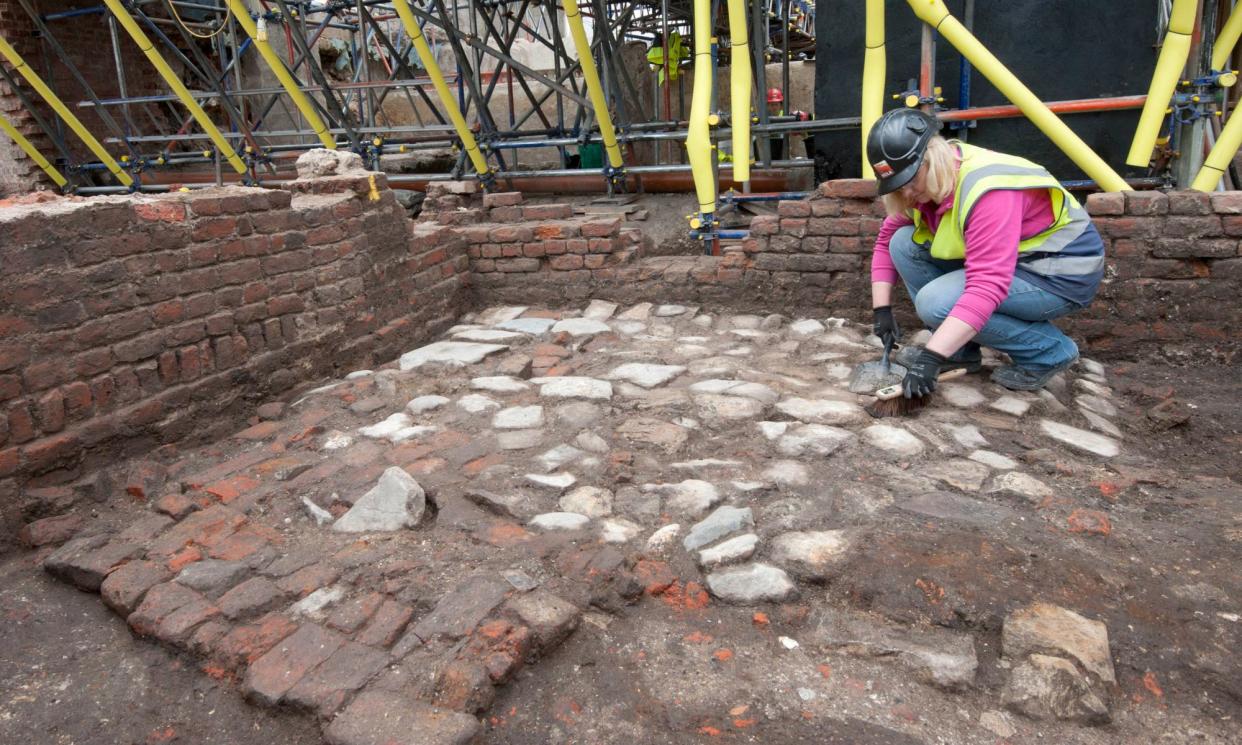How the excavation of Shakespeare’s Curtain theatre has changed stage history

Three metres below ground in a newly developed square in Shoreditch, east London, is a short expanse of brickwork that is both unique and utterly magical.
These low brick walls, measuring 14 metres by five, are the foundations of the stage of the Curtain theatre, where William Shakespeare’s company of actors were based between 1597 and 1599.
It was on this stage that Romeo and Juliet and Henry V are believed to have first been performed. And next year, with the opening of a Museum of Shakespeare on the site, visitors will be able to stand – perhaps even to act – on the very same spot, thanks to a glass floor suspended over one of the most important and resonant spaces in theatrical history.
Shakespeare was associated with several London playhouses during his career, including the Theatre, nearby in Shoreditch, and the Globe, across the Thames in Bankside; the remains of these and other Tudor theatres have been excavated in recent years.
Nowhere else, however, can visitors stand on the footprint of the actual stage where Shakespeare performed – the current Globe is a modern reconstruction some distance from the original theatre – or see the original Elizabethan floor surface on which he and his fellow players stood in the wings waiting to go on.
Related: London museum to use AI to let visitors walk on Shakespeare’s early stage
Heather Knight, who led excavations on the site for Museum of London Archaeology, also worked on several other theatrical sites in London, but said the Curtain was special because of its state of preservation and the way its discovery in 2011 changed theatrical history. “It was described as a complete gamechanging moment, but the more we travel in time from that statement, the more of a gamechanger it’s becoming.”
That’s because, even after she first unearthed the stage’s footings, Knight and everyone else believed the Curtain had been circular, like the Globe. As she would later discover, it was actually rectangular.
“There was a received narrative that proper playhouses start off round and then just get bigger, with the pinnacle of that evolution being the Globe,” said Knight. “And all of a sudden we’ve got this early, yet long-lived, rectangular structure. It’s like – hold on, what’s going on here?
“This has changed our understanding of theatre development.”
It also forced a swift change of plans for the overall development, called the Stage; the initial scheme by the architects Perkins & Will involved turning a jumble of Victorian warehouses into seven new residential and office buildings and a public plaza, incorporating a circular underground structure. Finding a rectangular building prompted a rethink above and below ground.
Related: Archaeologists uncover ‘Shakespeare’ doorway in Norfolk theatre
“As the excavation went on, we gradually recognised the importance of the site,” said Adam Yang, the project manager for the architects. “Because the archaeological footprint became bigger and bigger, the museum design became more and more important.”
Their solution is a low, steel and glass building, which leads down to an idiosyncratic subterranean space showcasing the stage ruins, and with space for other exhibitions and potentially, performance. The new museum, by “experience designers” Bompas and Parr, is scheduled to open at the end of 2025, and will be themed around a day in the life of the playwright, according to the director, Sam Bompas.
“I love the fact that your heartbeat quickens in that space,” he said. “And that’s the feeling that we want to give all visitors, amplified dramatically.”
Decisions on whether the attraction would only be accessible with a fee had yet to be confirmed, he said, though the stage ruins are visible to passers-by at street level through a viewing window designed for the purpose.
To Knight, the most intriguing question is how the design of the Curtain, with under-stage tunnel and multiple entrances, may have affected the work performed there. “Does this stage shape actually lend itself to battles?” she asked. “We seem to have the ‘fightier’ plays in rectangular buildings”.
“When you think about Romeo and Juliet, essentially, it’s not the greatest love story ever,” she said. “It’s a series of fight scenes linked by dialogue.” That said, within the foundations, she also discovered post holes that would have supported an onstage balcony. To be able to stand in the same spot, she said, was “quite a thing”.


